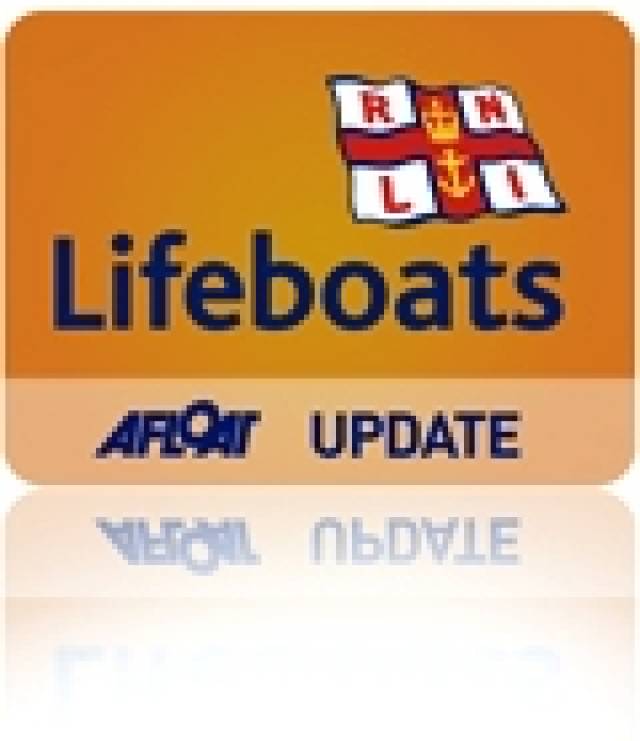#RNLI - It was a busy afternoon for RNLI lifeboats on the east coast on Thursday 8 August with separate call-outs in Wicklow and Wexford.
Wicklow RNLI's all weather lifeboat Annie Blaker was launched at 3.15pm to answer a call for assistance from a lone yachtsman experiencing mechanical difficulties off Wicklow Head.
As the crew assembled at the station, another call for assistance was received from a boat with four people in the same area.
The lifeboat launched immediately and located the small boat with four on board near Brides Head a short time later, but the occupants were in no immediate danger, so no further assistance was required as the boat was able to return safely to more sheltered waters under its own power.
The lifeboat then proceeded to the stricken yacht, located about two miles east of Wicklow Head shortly after 3.30pm. Weather conditions in the area at the time were described Force 4 with a south west wind.
The boat with the lone sailor was escorted back to Wicklow by the lifeboat. One of the lifeboat crew was transferred onto the yacht outside the harbour to assist with mooring the boat alongside the east pier.
Meanwhile in Co Wexford, the volunteer lifeboat crew at Rosslare Harbour RNLI launched their all weather lifeboat at 11am to assist an 11-metre fishing boat in difficulty.
The Arklow boat became entangled in fishing gear while north of Raven Point on the Wexford coast and lost all power. The fishing boat contacted the coastguard and the Rosslare Harbour RNLI lifeboat was launched and quickly on scene.
The weather conditions were described as good with a southerly Force 3 wind.
The lifeboat crew took the fishing vessel under tow as far as Cahore Point where the Arklow RNLI all-weather lifeboat took over the tow and brought them on to Arklow.
Speaking after the call-out, Rosslare RNLI volunteer deputy press officer Jamie Ryan said: “The emergency services reacted swiftly and help was on scene quickly. The three fishermen took the correct action in contacting the coastguard."































































